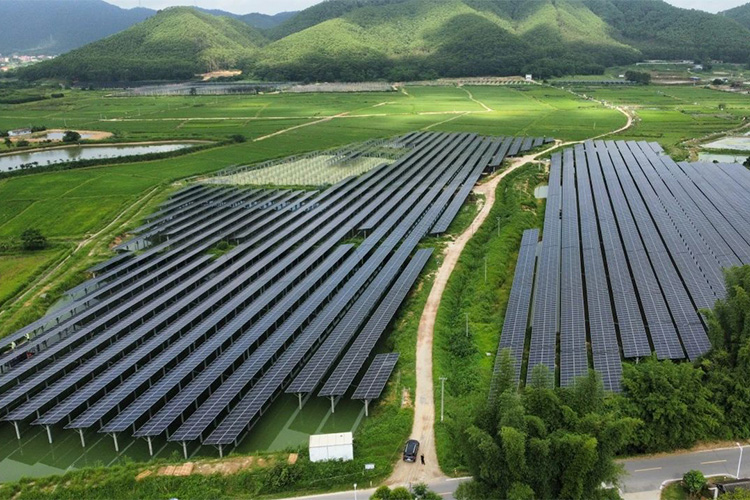Once fully operational, the project is expected to generate an average of over 15.4 million kilowatt-hours annually, saving 55,000 tons of standard coal and reducing carbon dioxide emissions by 153,000 tons.
Rows of neatly arranged solar panels stand atop the water surface of an aquaculture farm in Foshan, Guangdong. The fishery–photovoltaic symbiosis power station is an emerging industrial model that combines aquaculture with solar photovoltaic power generation.
The installed capacity of the project exceeds 100 megawatts. Currently, the first phase of the project is substantially completed. Once fully operational, it is expected to generate an annual average of over 15.4 million kilowatt-hours, saving 55,000 tons of standard coal and reducing carbon dioxide emissions by 153,000 tons.
The project adopted CCCC-developed solar tracking system, which enhances power generation efficiency on sunny days. During adverse weather conditions, the system adjusts the angle of the solar panels to minimize the likelihood of damage and the frequency of cleaning. Photovoltaic modules equipped with the solar tracking system receive 14.9% more total radiation than traditional fixed-angle modules, significantly reducing labor costs in the process.



